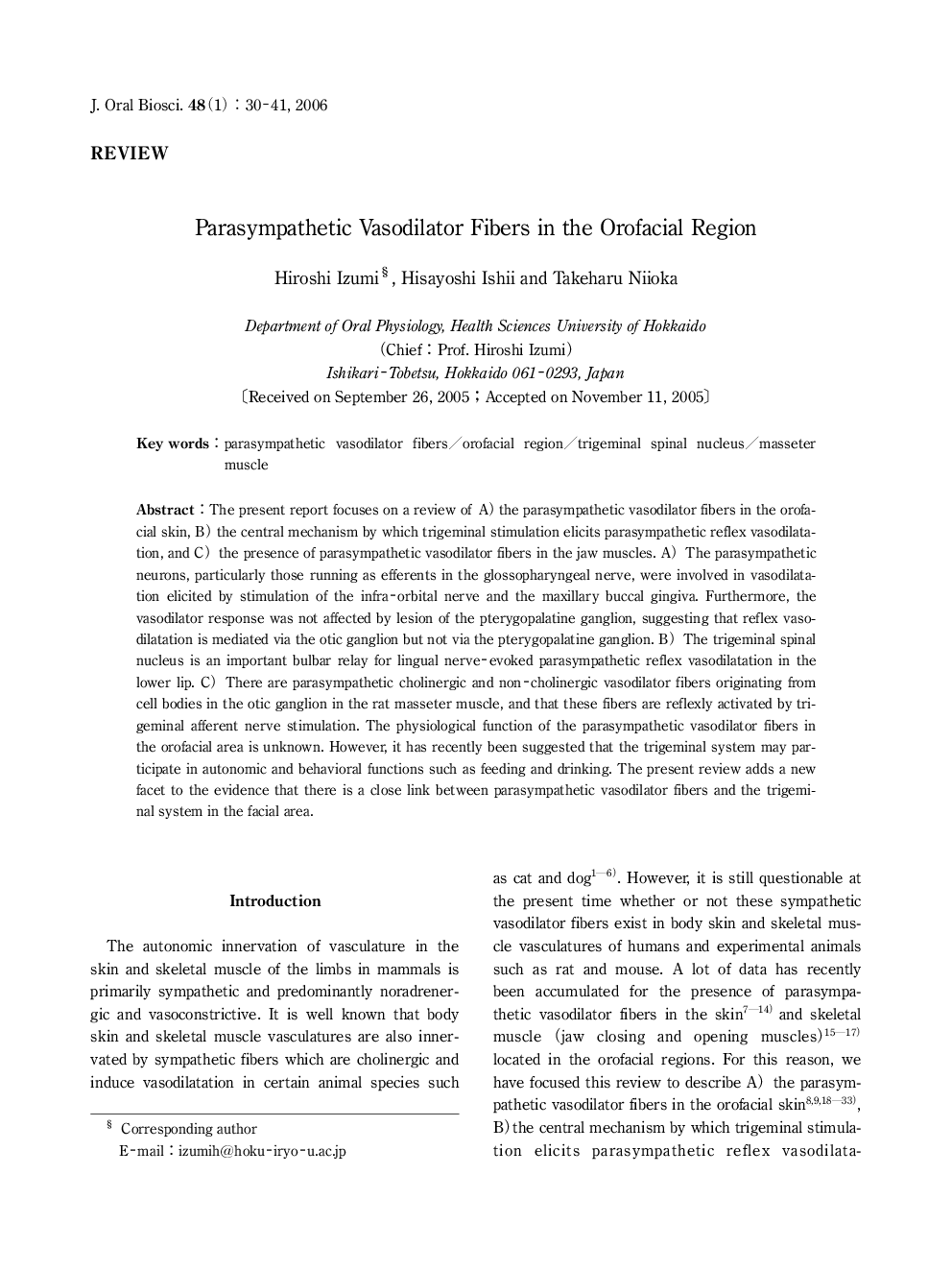| Article ID | Journal | Published Year | Pages | File Type |
|---|---|---|---|---|
| 2777146 | Journal of Oral Biosciences | 2006 | 12 Pages |
The present report focuses on a review of A) the parasympathetic vasodilator fibers in the orofacial skin, B) the central mechanism by which trigeminal stimulation elicits parasympathetic reflex vasodilatation, and C) the presence of parasympathetic vasodilator fibers in the jaw muscles. A) The parasympathetic neurons, particularly those running as efferents in the glossopharyngeal nerve, were involved in vasodilatation elicited by stimulation of the infra-orbital nerve and the maxillary buccal gingiva. Furthermore, the vasodilator response was not affected by lesion of the pterygopalatine ganglion, suggesting that reflex vasodilatation is mediated via the otic ganglion but not via the pterygopalatine ganglion. B) The trigeminal spinal nucleus is an important bulbar relay for lingual nerve-evoked parasympathetic reflex vasodilatation in the lower lip. C) There are parasympathetic cholinergic and non-cholinergic vasodilator fibers originating from cell bodies in the otic ganglion in the rat masseter muscle, and that these fibers are reflexly activated by trigeminal afferent nerve stimulation. The physiological function of the parasympathetic vasodilator fibers in the orofacial area is unknown. However, it has recently been suggested that the trigeminal system may participate in autonomic and behavioral functions such as feeding and drinking. The present review adds a new facet to the evidence that there is a close link between parasympathetic vasodilator fibers and the trigeminal system in the facial area.
